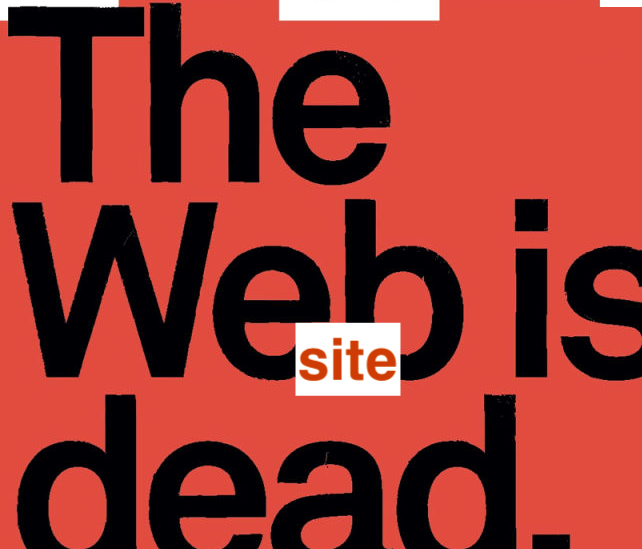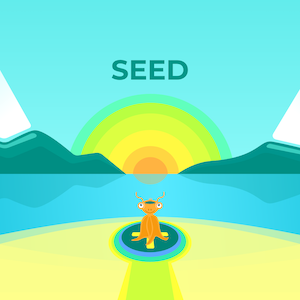What started out as an 'ad-hoc experiment' in 2010, transformed over time into a veritable platform for expression, in a collective and global sense. A road-map of artist narratives, emerging electronic music, interviews, album reviews, informative and critical essays, transient and inspiring personas and the post-modern culture of music. The Audio Pervert Blog completed 10 years in 2020 - an embodiment of over 500 articles, that bring together a decade of collective research, analysis, learning and writing, as public domain content. The team of three is stoked to be independent (and partly anonymous) and having the privilege to focus on the music, personas and narratives outside the mainstream. By 2020, the site had accumulated 2.3 million page views and 341k shares, which may seem small, when we compare it to average indie footfall, yet the growing number of readers, feedback and shares, provides us immense gratification. To know that you are reading this, gives us joy as well as context! Here is a biographic take on the blog, it's formation, changes, the challenges it faces and what's on the horizon beyond 2020. Celebrating the relentless spirit of electronic music and a decade of vociferous listening, we have created a 2 hour 47 minute playlist titled 'Dance on Debris!' featuring a gamut of amazing artists from the last 50 years and bits of Audio Pervert - Play!
Why was Audio Pervert created?
Stay safe and strong - and stay tuned!
Some context is needed to explain why. It was around 2009, the internet was exploding with new portals of public and artistic expression. Myspace had fallen off it's prime and independent blogs and music publications acquired dominance, in terms of distribution of music, following and readership. YouTube, Soundcloud and Bandcamp ramped up music circulation like never before. Having finished the anthology of Indian Electronic Music - HUB, which was turning point of sorts, there was a clear need to extend and transform. Blogspot was a spontaneous choice, very rudimentary in nature, yet the limitations aside, it was much easier setting up a blog than putting together a book. The initial desire was to showcase lots of new Indian electronic music, in short capsulated posts. 2009-2012 the electronica and indie scene in India was thriving with new voices, discoveries and possibilities. Early on, feedback from peers and emerging artists in India provided much needed support for the articles to proliferate online. The discovery of Charanjit Singh and Ten Ragas To A Disco Beat, proved a sort of leaping point, for the blog's rapport, attracting a windfall of readers from EU, Russia and North America.
The artist and the blog. What separates the two?
That's a bit difficult to define... As an artist, the work translates as a composer, DJ or live performer - those three always actualise as a solo unit. The blog, with various contributors, sources of information, feedback from subscribers, has become multi-dimensional and complex. Not something imagined in the onset. They are two separate journeys - that can co-exist at times. The website or call it blog, is collective in nature, in terms of content, focus and output. Many articles have been written by people of various disciplines over time. The text, artwork and music is published as Creative Commons SA (Share Alike) - Which means derivatives of works existing earlier or compatible for reuse, is published as any public domain content online. 'Audio Pervert' would then be a base or foundation, made of the artist and the blog, yet in it's entirety a third conclusion. The recent compilation between India and Norway, titled Merge Emerge featuring 18 artists from both nations, released by Digital Diaspora (Oslo), is a good example of what separates the two, yet connected as music and curation, by 'Audio Pervert'.
The transition to a more international readership and range of topics. Why did that happen?
Being based in India earlier, the stories were subject to what was going on in and around the subcontinent. The move to Spain in 2015, and consequently being exposed directly to the EU's contemporary scene - interaction with artists, institutions, labels, agencies, festivals and many intersecting facets of the culture, was clearly a big transition. Something that gave wings to the website in many ways. As few examples, being able to reach out to Latvian and Russian synth-makers or Nordic music festivals or an underground bunker loaded with thousands of synthesizers in Switzerland, proved to be strategic and adventerous. In three ways to be precise - building content, connections and future pathways - reaching out to new regions, especially the non-english speaking ones - connecting the dots back to India, to create bi-lateral focus via electronic music between emerging artists. The transition was not one-sided, but somewhat predicated by the gradual shift in readership. A majority of which is now based in EU, North America and UK, closely followed by India, Russia and Ukraine. Though the Ukraine bit is troll farms drawn to the word 'pervert' and not 'audio'. Being read from far away places like Brazil, South Africa and Japan too. It's a bit baffling to comprehend that readership from France stands at #1 currently.
How does the curation of topics, content and editorial work together?
It's all based over the internet and the volume of which has grown in a wanton sense over the last ten years. The earlier model of showcasing artists and their music was left, moving towards stories which are based on concept or identity. Given that electronic music and it's global culture is so vast and a constantly mutating space, the curation is based on what we receive as emails, demos, electronic press kits, feedback from subscribers and our own new discoveries. As practice there is no ownership of the written content. A lot of the conceptual and historical content is sourced from academic research and archives at Academia, JSTOR, Reddit, Research-Gate etc. Mid-2017 onwards, a structural shift streamlined the work, between the contributors, in terms of creating a large database for a new mailing list - upping visibility and writing quality. The calendar was consolidated to generate two newsletters with four new stories every month. Reading time and making the content 'clearer' is top priority - regardless of the subject at hand. Site analytics - average session duration is currently 2 minutes 28 seconds, hence the bounce-rate on the website gradually improved, from 41 seconds in 2013 to more than 2 minutes in 2019.
The commitment towards gender equality in content? How does that work?
More changes followed in 2018, with the Inclusion Rider - a new commitment towards gender-equality in terms of content and focus. The Inclusion Rider was adopted from an existing empowerment model by the Annenberg Institute in California. A commitment that has proved to be difficult at times, it has been a crucial step towards finding and generating stories which are about 'the female'. One example of discovering female content and voices, has been the close association with FEMWAV, since it's inception in 2019. Internationally speaking, the change mirrors the rise of feminist activism in electronic music and popular culture, yet our commitment is towards the emerging and independent. Honestly the divas and the cherry-picked mascots do not really matter to female empowerment or democratic change. The commitment towards female talent is not limited to the scene now, but also revisiting the vast legacy of women in music and modern culture.
Some of the narratives seem to passionately criticise dominant culture. Why?
Some of the narratives seem to passionately criticise dominant culture. Why?
As seen for decades now, well before we were born, that dominant culture stands against individual identity and space. Someone like Noam Chomsky would explain the fact way better. It can be difficult to define the limits of dominant culture, as it's omnipresent in our lives. The 'enterprise' could be very profitable (or mainstream) be it a show or a website, if we remain loyal to the dominant culture and it's agenda. If we remain subservient to the hype-machine. The gamut of websites which represent electronic music culture around the world, is simply bewildering. Yet a large majority remain attached within what the mainstream predicates. Hence, separating the dominant discourse from individual choice is vital, to shape artist autonomy and value. Individually or collectively. There are thousands and thousands if not millions of artists like that around the world. As to why? One can pull up big words here, yet to keep it simple, it's a lot of fun - involves loads of discovery and learning. Music and art is totally connected to the human condition.
Identity, technology, culture and politics being part of the narrative which surrounds the music. Why?
Perhaps it's a concept to be honest. Many times we are not aware of why we do things exactly. Music by itself is amorphous, androgynous, and gets meaning or gives meaning depending if you are the creator or the listener. Also depends on the environment - for example, if one lives in a noisy brutal mega-city or inside a sparse 'welfare bubble' of the first-world. Plus orientation, gender, class, language etc. As of now, identity as a field is exciting, to discover new artists and music. Someone did say in the past "art and music which is not political, has aesthetics, but no memory eventually". Even as that may sound dismissive, the zeitgeist of our times, call it late-capitalism, call it post-modern, is a very interesting space to document change, mutation and resistance created by the new voices. The new patterns emerging from individuals and groups allover the world. How then is music, lifestyle, taste and memory predicated by the dominant culture? For example, in 2019 the essay titled Doomer, Boomer, Zoomer, Bloomer went viral for reasons we don't know, yet the article was an attempt to explain the 'preset personalities' that have trapped us, perpetuated by the dominant culture of late-capitalism. The global fetishism of cats is just one example of such 'clone' cultures. The article received backlash from quite a few readers, proliferating anyways into cyberspace, as the most visited page on the blog in 2020.
Why blogspot? It's ancient...
We've been heckled about that recently. Also aware that sometimes, public opinion is shaped by how and where a website is hosted. Ancient it is by all means. The GUI is horrible. Currently we are seeking a new home. New design. New aesthetics to play with! Thus a financial impact. Given that the effort is completely independent in nature, and created upon years of voluntary effort by many people, Blogspot as a home, has provided certain benefits - being absolutely free, offering unlimited space. The online visibility has compounded every year thanks to the existing SEO (perhaps the best thing about Google). 2021 we hope to migrate to a new home, and build new features which aim to bring in more audio-visual elements and public interaction. Working on that, and fingers crossed!
The pandemic has severely challenged the independent scene. What about coping mechanisms?
The Corona virus pandemic struck rapidly at the cusp of global concerns, that industrial civilisation is clearly falling apart. The year saw a massive slowdown of the culture industry, and the aftershock is far from over. Festivals, concerts, raves, seminars, cultural properties - 95% suspended. That 'breakdown' has impacted our individual abilities and resources in various ways. Being independent has advantages and disadvantages. To find funding for independent entities has become very difficult. Selling music and related projects is as difficult. The editorial struggles at times to cope with the incoming information - the time needed to generate interesting articles. Bringing organic growth into a sustainable structure is tough. What gives us hope and warmth is the sheer amount of new music, new artists and new interactions going on, regardless of the pandemic and global hiatus. Coping mechanisms are many, and the way perhaps is to persist and resist, drawing inspiration from music, staying healthy and building more empathy... and less social media!
What's on the horizon?
We are in the middle of global upheaval and crisis. Climate change, the Covid-19 pandemic, industrial and economic slowdown, and much disruption within the society and the ecosystem. It is also a time to introspect, adapt and diversify as individuals - into new fields of work, expression and ways of thinking. The new pathways point to empowerment and education extending from music - keeping electronic music, climate justice and feminism as three main focus areas. Back in 2010 Audio Pervert began without a fixed objective, and now 10 years on, we are compelled to rethink, revaluate and reconfigure. Currently new collaborations, compilations, activism and regions are being mapped for the year and beyond. Also entails getting rid of certain structures and ideas. Continue creating new opportunities based around electronic music, between India and the rest of the world. New plans extending into music and artists from Africa and Latin America... As an entity to be able to remain independent, progressive and always close to the source of the sound! As a society, we are living in truly strange times to say the least and to sum it up with some beautiful insight - “Hope has two beautiful daughters - their names are Anger and Courage. Anger at the way things are, and Courage to see that they do not remain as they are.”― Augustine of Hippo.
Stay safe and strong - and stay tuned!































0 -